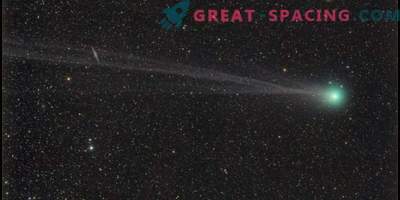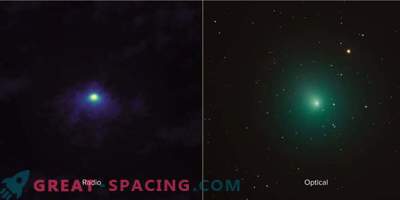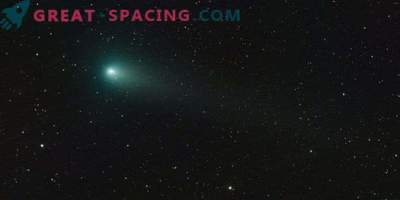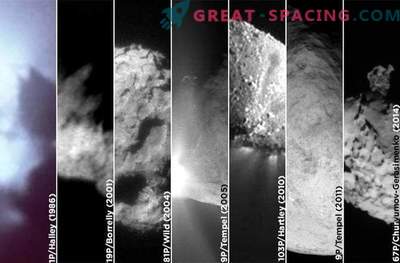
Last spring, researchers from the Lowell Observatory observed Comet 41P / Tuttle-Jacobini-Cresac. They noted that its rotational speed was rapidly slowing. She moved from 24 hours to 48 hours. If this continues in the future, the object can simply stop and start rotating in the opposite direction.
41R is a short-period comet that spends 5.4 years on an orbital circling around the Sun. In 1858, H. Tuttl found it, and in 1907 M. Giacobini rediscovered it. In 1951, it was resumed by K. Kresak. Scientists considered the object until the beginning of 2017, when it flew over a distance of 21 million kilometers from us. The core seemed relatively inactive and reached 1.4 km wide. From March to May, the object was distant by 30 million km, which made it possible to examine the comet in detail.
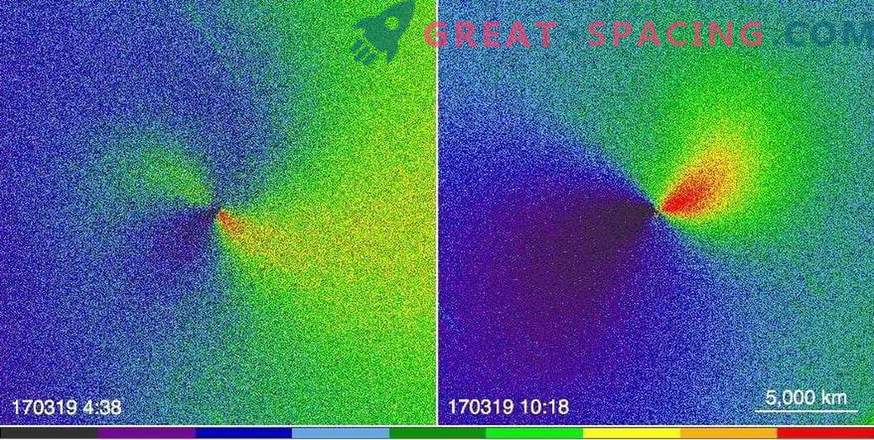
Comet 41P / Tuttl-Jacobini-Kresak was captured on March 19, 2017 with a Discovery Channel telescope. Most of the coma emissions were artificially removed to demonstrate the structure of the jets. The difference between the two shots is 6 hours. The weak jet on the left increases as the sun's rays arrive, and the second one disappears as the source moves at night. The rotation period is 24 hours and increased to 27 hours in 10 days Comets are remnants of the formation of our system, but over 4.5 billion years they have changed a lot. When approaching with the Sun, the ice on the surface melts and dust and gas streams are released, stretching thousands of kilometers. They form coma and tail. The most common gas is cyanogenic radical.
Researchers measured the movement of two cyanogenic jets in 41P and noticed that the rotation period slowed down from 24 hours to the 48th. No one expected such a rapid drop in speed. The findings hint that the comet has an extremely elongated handicap, low density, and the jets are near the end of the body.
If future reviews calculate the size of the core, then it will be possible to establish the density limit of the internal force of the object. However, this allows you to look into the past. If the comet behaved in the previous orbits, the nucleus could break, increasing the brightness for a short period. A similar outbreak was recorded in 2001.
